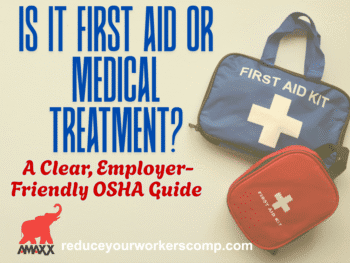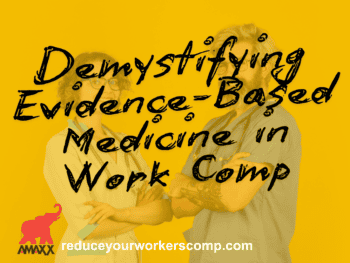
Medical Director to the Rescue
Most claim teams have access to a medical director that can assist in making decisions related to requested medical care. This person generally assists in driving best practices within the insurance carrier and provides guidance or other recommendations. Roles, where they can be of use, include:
- Recommendations on a medical expert for an independent medical examination; and
- Guidance on when a change in the employee’s treating doctor or clinic may be necessary.
They can also assist with recommendations regarding return to work and evaluating whether a written post-injury job offer is sufficient.
Click Link to Access Free PDF Download
“The 6-Step Process To Determine Workers’ Comp Injury Causation”
Claim Team Roundtable
The claim team itself is responsible for issues related to approving reasonable and necessary medical care. One easy-to-use tool is the claim team “roundtable.” A roundtable is a strategy session where an individual claim handler meets with other adjusters and managers to discuss cases and reach the best result. A well-prepared claim handler should know their claim in detail and be prepared to present it to others – anticipating tough questions and thinking about responses. Other aspects to consider when preparing for a roundtable meeting on issues concerning medical care include:
- Understanding the strengths and weaknesses of denying further medical care;
- Other factors that are impacting the claim and delaying a recovery; and
- Strategy to advance a claim toward settlement via mediation or taking actions to place a claim into litigation.
Now is the time to consider using this option.
Other Tools to Consider
There are several other tools a claim handler can consider when deciding whether to approve future ongoing medical care. Each tool should be considered before an outright denial.
- Medical Treatment Parameters: A growing list of jurisdictions are adopting treatment parameters for medical care. These guidelines are a factor a compensation judge or arbitrator needs to consider before approving medical care. Even if your state lacks established parameters, arguments should still be considered within the scope of evidence-based medicine.
- Independent Medical Examinations: Independent medical examinations should be used carefully, as most jurisdictions have limitations on how and when they can be used. Defense interests are also subject to limitations that may force this option to be used early on. Cost is also a factor, especially when the employee has suffered injuries to multiple body parts and requires a review from more than one expert.
- Utilization Reviews: This process can be used when examining a variety of treatment modalities and the necessity of prescription medications. Most utilization reviews are performed by an outside service provider who applies evidence-based standards to determine if something is appropriate given the severity of the work injury. These service providers review medical best practices and make recommendations.
- Bill Review Services: These services can review medical bills that have been paid and determine payment accuracy. In terms of medical care, they can also be used to determine treatment patterns and excessive care. This information can then be used if an issue proceeds to litigation.
- Stopping Leakage: Leakage is the biggest animal in the “reducing claim cost” jungle. Unnecessary costs, expenses, and payment errors add to astronomical amounts of money. These are often expenses workers’ compensation programs are unable to recover. When reducing file leakage, it is vital to audit your files regularly. File reviews are also a significant opportunity to identify fraud, waste, and abuse or stop it from occurring in the first place.
Several tools can assist in determining the reasonableness and necessity of medical care. Most of these items add little cost to the bottom line and can pay huge dividends over the life of countless claims.
Conclusions
Stopping excessive and unnecessary medical care in a claim can be daunting. Using different tools at the correct times promotes claim efficiency and positively impacts the bottom line. Now is the time to consider what tools are missing from your workers’ compensation program.

Contact: mstack@reduceyourworkerscomp.com.
Workers’ Comp Roundup Blog: http://blog.reduceyourworkerscomp.com/
©2023 Amaxx LLC. All rights reserved under International Copyright Law.
Do not use this information without independent verification. All state laws vary. You should consult with your insurance broker, attorney, or qualified professional.














